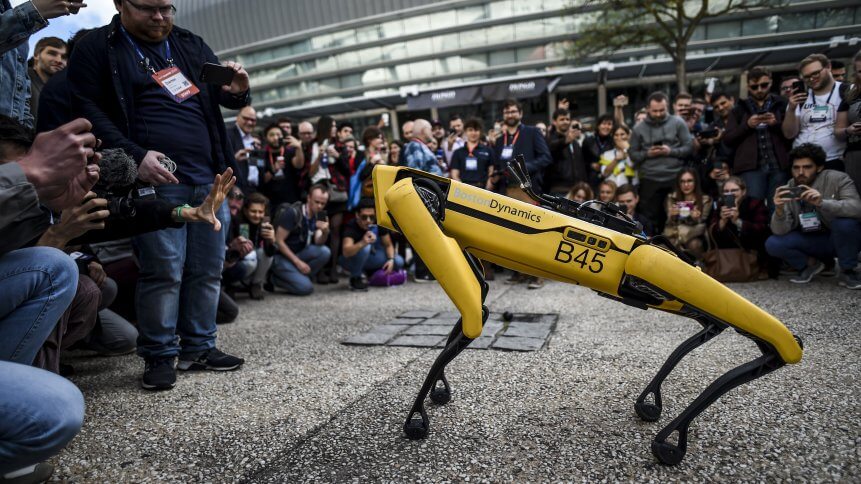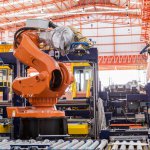Boston Dynamics has ‘big plans’ to go commercial in logistics

- Boston Dynamics has long captured imaginations with viral videos of its advanced robotics
- The Softbank-owned technology firm is now ready to scale up its commercial business
Boston Dynamics is an experimental robotics company whose viral videos depicting the powerful autonomous robots have both thrilled and terrified us mortals in equal measure.
The ghoulishness of these athletic, dog-like machines is partly due to their murky association with autonomous combat. Research and development funding for the MIT spinout has largely come from DARPA (Defense Advanced Research Projects Agency). BigDog, which first brought the work of Boston Dynamics into the limelight, was designed for the US military.
Boston Dynamics was bought by Google in 2013, before being sold to Softbank in 2017. But only recently has it begun to push the enterprise towards something like a commercial business, and now — following decades of experimentation and development — it’s ready to scale.
According to TechCrunch, reporting from its Disrupt conference, the firms is readying to market its technology to the logistics sector, a decision which follows the commercialization of Spot, a semi-autonomous dog-like quadroped.
The versatile robot — which can walk up to 3mph over uneven terrain, detect obstacles with 360-degree vision and right itself after it falls — has been utilized across a range of very different applications, including hazardous environments such as construction sites and utility installations. Police in Massachusetts, US have even trialled Spot for bomb disposal or for entering buildings in siege scenarios. In Singapore, Spot has been used to enforce social distancing in local parks.
Boston Dynamics claims to have sold 260 such units at a cost of US$75,000 each, proving that there is an appetite even in lieu of any prescribed use case, which is a far cry from the purpose-built, but much more expensive products of industrial robotics companies like ABB.
“We weren’t sure exactly what the target verticals would be,” admitted new CEO, Robert Playter.
“As an industrial tool, this is actually quite affordable. But we’ve been very aggressive, spending a lot of money to try to build an affordable way to produce this, and we’re already working on ways to continue to reduce costs.”
YOU MIGHT LIKE

No, robots didn’t secretly kill 29 scientists in a lab
In 2020, Boston Dynamics responded to a short-term request for robots used for disinfection. Playter also noted, as TechHQ reported, that the global pandemic has led to surging uptake in robotics in industry as businesses future proof operations and reduce their need for manual workforces.
“People are realizing that having a physical proxy for themselves, to be able to be present remotely, might be more important than we imagined before,” Playter told TechCrunch.
“We’ve always thought of robots as being able to go into dangerous places, but now danger has been redefined a little bit because of COVID. The pandemic is accelerating the sense of urgency and, I think, probably opening up the kinds of applications that we will explore with this technology.”
Boston Dynamics’ robots are poles apart from the fixed arms of manufacturing robots and the gridlike ‘swarm’ networks developed by Ocado Technology. Robots in logistics so far tend to resemble “autonomous pallets” or containers-on-wheels — Boston Dynamics wants to bring something new into the sector, with robots that can move boxes around with much more dynamism and flexibility.
“We have big plans in logistics,” Playter said. “we’re going to have some exciting new logistics products coming out in the next two years. We have customers now doing proof of concept tests. We’ll announce something in 2021, exactly what we’re doing, and we’ll have product available in 2022.”
The US robotics firm already offers Pick, a stationary item-picking unit, and is developing its mobile robot, Handle, that can move around and pick up boxes within a very limited space.
We won’t likely see Atlas vaulting around warehouses in the next few years. While the acrobatic humanoid is an exceptional show of Boston Dynamics’ engineering, it’s not really practical for the field. “It’s such a complex robot, and it can do so much it forces us to create tools we would not otherwise. And people love it — it’s aspirational, it attracts talent,” said Playter.









